In the skies of Tennessee, nine distinct hawk species grace the landscape, each contributing to the state’s rich avian tapestry.
With their diverse characteristics and habitats, these majestic birds of prey captivate both bird enthusiasts and conservationists alike.
From the agile, Sharp-shinned Hawk to the powerful Red-tailed Hawk, Tennessee provides a haven for these aerial hunters.
Exploring the lives of these nine hawk species unveils their individual traits and the delicate ecological balance they help maintain.
Join us on a journey through the soaring realms of Tennessee’s hawks, delving into their unique behaviors, habitats, and roles within the intricate web of the state’s diverse ecosystems. Stay focused.
9 Hawks of Tennessee
Check out the diverse hawks soaring through the skies of Tennessee, each species with its unique characteristics and adaptations.
From the agile Sharp-shinned Hawk to the majestic Red-tailed Hawk, these birds of prey play essential roles in the ecosystem.
Journey through their distinct profiles, shedding light on their scientific names, populations, lifestyles, and statuses in the region.
1. Sharp-shinned Hawk
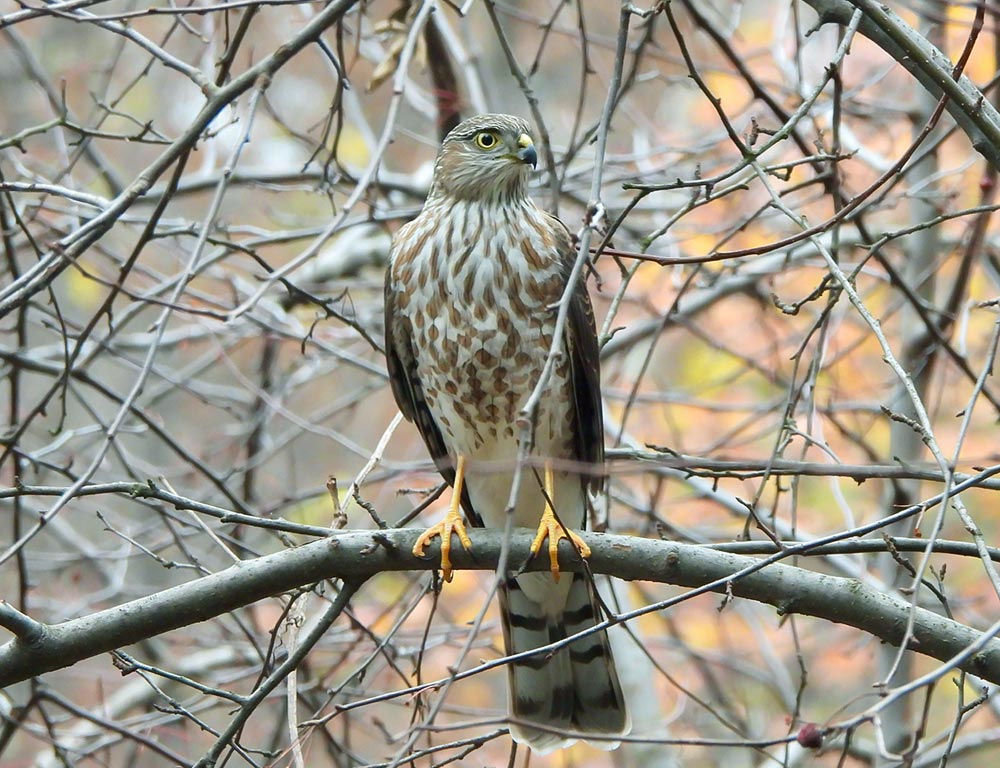
- Scientific name: Accipiter striatus
- Category: Accipiter (forest hawk)
- Population: Stable
- Life span: 5 to 7 years
- Size: 10 to 14 inches
- Weight: 3 to 7 ounces
- Food: Primarily small birds, occasionally small mammals
- Wingspan: 16 to 22 inches
- Status: Common
Sharp-shinned Hawks are agile and slender birds of prey, well-adapted for maneuvering through dense forests. Their population remains stable, with a relatively short life span of 5 to 7 years.
These hawks are small, with a size ranging from 10 to 14 inches and a lightweight build of 3 to 7 ounces.
Their primary diet consists of small birds; occasionally, they may hunt small mammals. The wingspan of Sharp-shinned Hawks ranges from 16 to 22 inches.
2. Red-shouldered Hawk
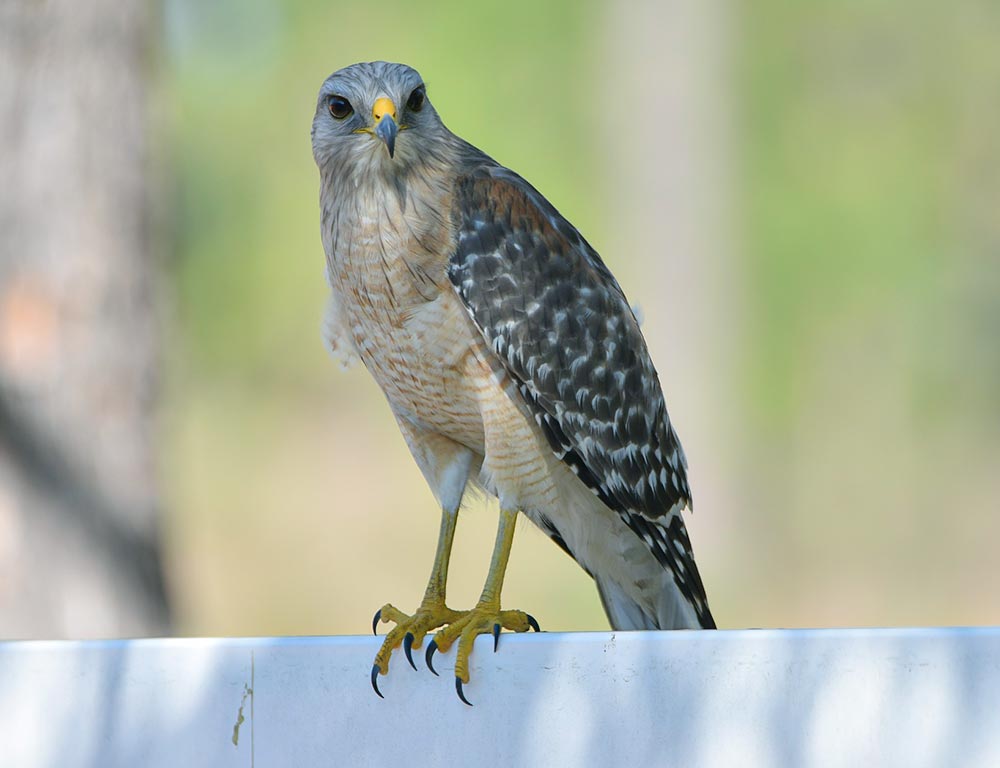
- Scientific name: Buteo lineatus
- Category: Buteo (broad-winged hawk)
- Population: Stable
- Life span: 10 to 15 years
- Size: 17 to 24 inches
- Weight: 1 to 2.5 pounds
- Food: Small mammals, amphibians, reptiles, and birds
- Wingspan: 37 to 43 inches
- Status: Common
Red-shouldered Hawks are characterized by their vibrant colors and are common in Tennessee. With a life span of 10 to 15 years, these hawks are part of the broad-winged hawk category.
They have a size ranging from 17 to 24 inches, weighing 1 to 2.5 pounds. Their diet includes small mammals, amphibians, reptiles, and birds. These hawks have an impressive wingspan ranging from 37 to 43 inches.
3. Broad-winged Hawk
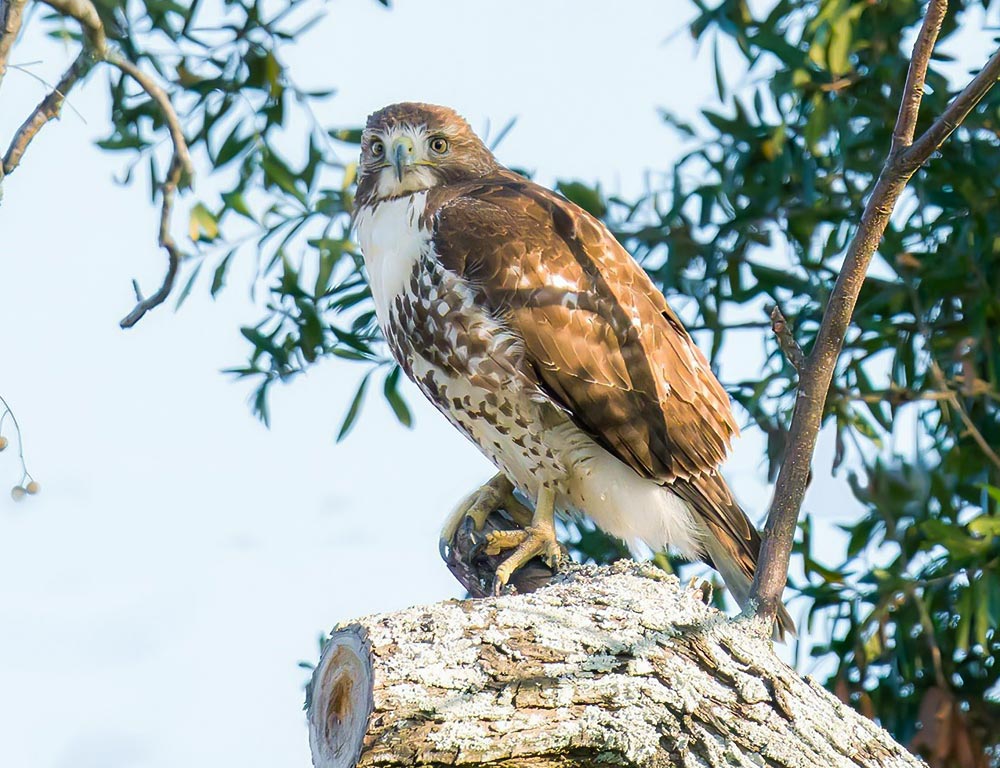
- Scientific name: Buteo platypterus
- Category: Buteo (broad-winged hawk)
- Population: Stable
- Life span: 4 to 5 years
- Size: 13 to 17 inches
- Weight: 9 to 20 ounces
- Food: Small mammals, reptiles, and insects
- Wingspan: 28 to 33 inches
- Status: Common
Broad-winged Hawks, part of the buteo category, are characterized by their broad wings and short tails.
With a stable population, these hawks have a life span of 4 to 5 years. They are relatively small, ranging from 13 to 17 inches, and weigh between 9 to 20 ounces.
Their diet includes small mammals, reptiles, and insects. Broad-winged Hawks have a wingspan ranging from 28 to 33 inches, allowing them to soar gracefully in the skies of Tennessee.
4. Northern Harrier
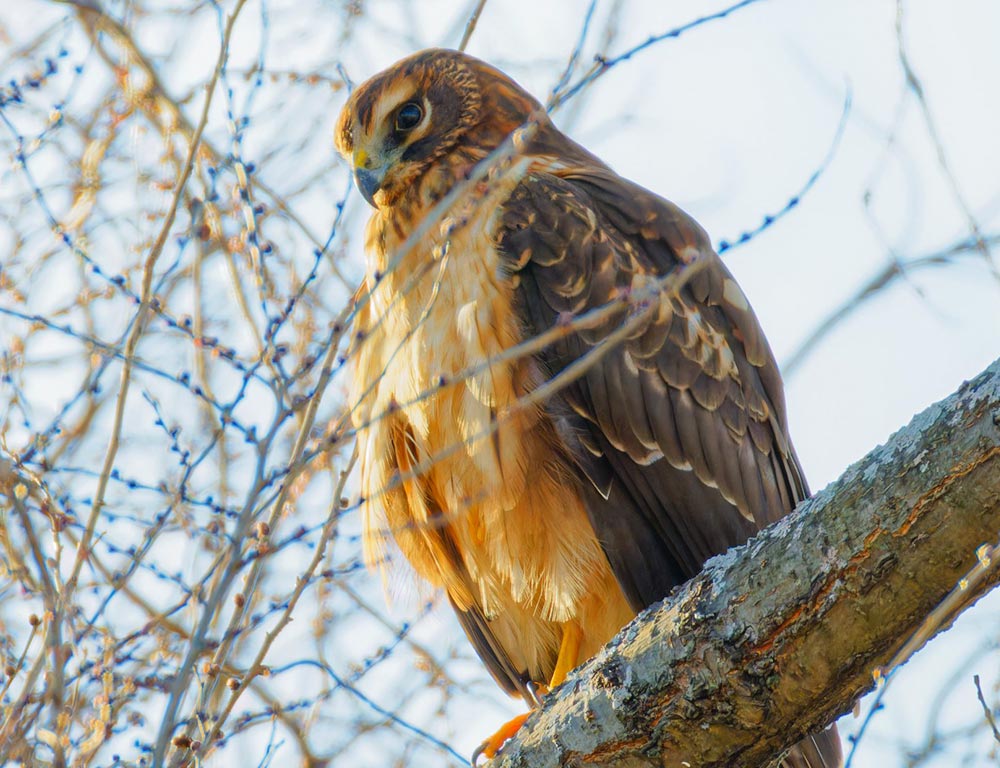
- Scientific name: Circus hudsonius
- Category: Circus (harrier)
- Population: Stable
- Life span: 5 to 10 years
- Size: 18 to 24 inches
- Weight: 10 to 26 ounces
- Food: Small mammals, birds, and reptiles
- Wingspan: 40 to 48 inches
- Status: Common
The Northern Harrier, belonging to the harrier category, is known for its distinctive facial disk. With a stable population, these hawks have a life span of 5 to 10 years. They are of medium size, ranging from 18 to 24 inches, and weigh 10 to 26 ounces.
Their diet consists mainly of small mammals, birds, and reptiles. Northern Harriers exhibit an impressive wingspan, measuring between 40 to 48 inches, enabling them to soar and hunt efficiently.
5. Red-tailed Hawk
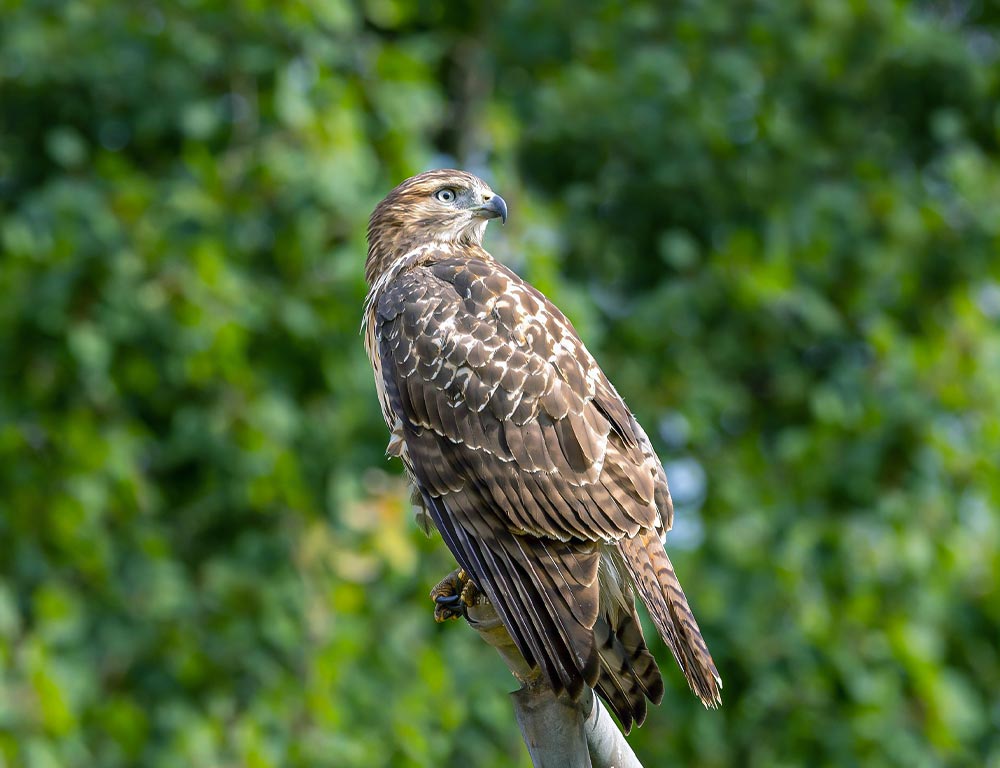
- Scientific name: Buteo jamaicensis
- Category: Buteo (broad-winged hawk)
- Population: Abundant
- Life span: 10 to 15 years
- Size: 18 to 26 inches
- Weight: 2 to 4 pounds
- Food: Small mammals, birds, and reptiles
- Wingspan: 43 to 56 inches
- Status: Common
Red-tailed Hawks are one of the most widespread and recognizable hawks. They boast a stable and abundant population belonging to the broad-winged hawk category.
With a life span of 10 to 15 years, these hawks are large, ranging from 18 to 26 inches, and weigh between 2 to 4 pounds.
Their diet includes small mammals, birds, and reptiles. Red-tailed Hawks have an impressive wingspan, ranging from 43 to 56 inches, aiding in their soaring flight and efficient hunting.
6. Northern Goshawk
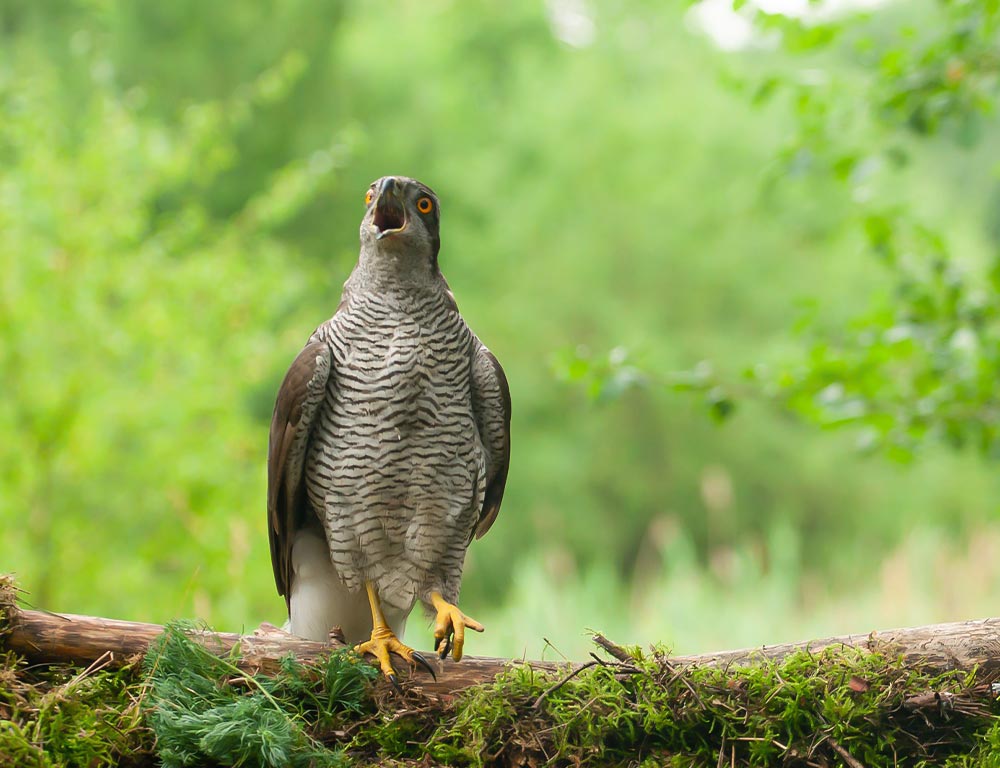
- Scientific name: Accipiter gentilis
- Category: Accipiter (forest hawk)
- Population: Stable
- Life span: 7 to 16 years
- Size: 20 to 26 inches
- Weight: 2 to 5 pounds
- Food: Birds and mammals
- Wingspan: 40 to 46 inches
- Status: Uncommon
The Northern Goshawk, a forest hawk, is known for its powerful build and strong flight. With a stable population, these hawks have a relatively long life span of 7 to 16 years.
They are of medium to large size, ranging from 20 to 26 inches, and weigh between 2 to 5 pounds. Their diet primarily consists of birds and mammals.
Northern Goshawks have a wingspan of 40 to 46 inches, contributing to their agility in navigating through wooded areas. While they are uncommon, their presence in Tennessee adds to the region’s diverse birdlife.
7. Cooper’s Hawk
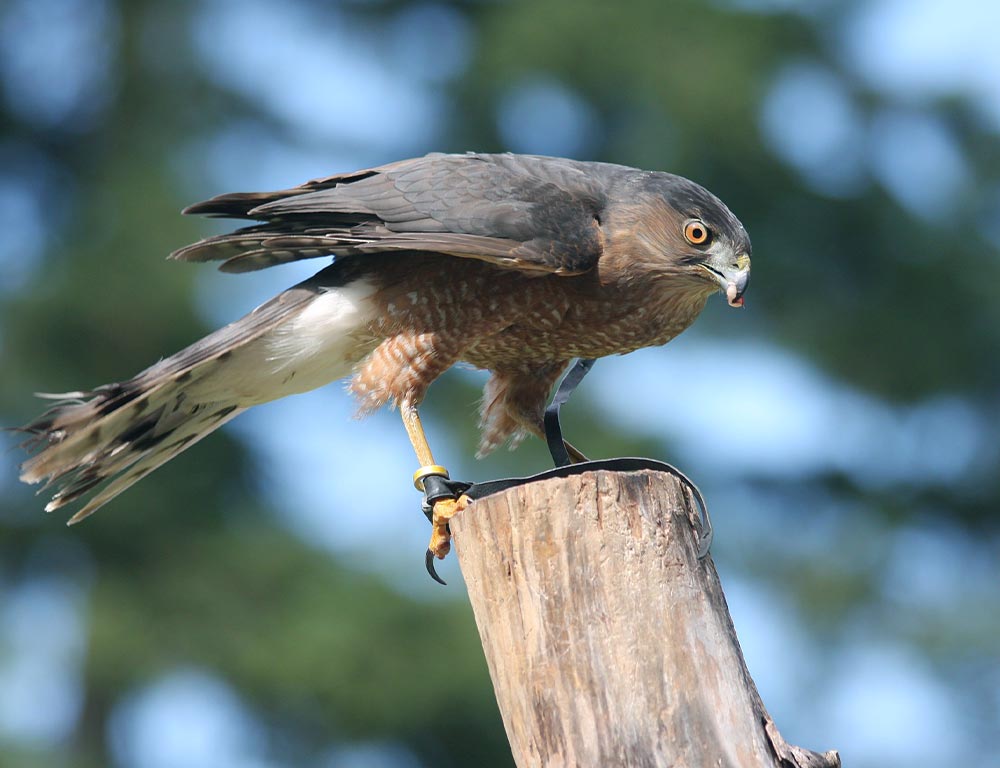
- Scientific name: Accipiter cooperii
- Category: Accipiter (forest hawk)
- Population: Stable
- Life span: 7 to 10 years
- Size: 14 to 20 inches
- Weight: 8 to 24 ounces
- Food: Birds, small mammals
- Wingspan: 24 to 35 inches
- Status: Common
Cooper’s Hawks are medium-sized forest hawks known for their swift and agile flight. With a stable population, these hawks have a life span of 7 to 10 years. They range in size from 14 to 20 inches and weigh between 8 to 24 ounces.
Cooper’s Hawks primarily feed on birds and small mammals, and their wingspan ranges from 24 to 35 inches. Their adaptability to various habitats, including suburban areas, makes them a common sight in Tennessee.
8. Rough-legged Hawk
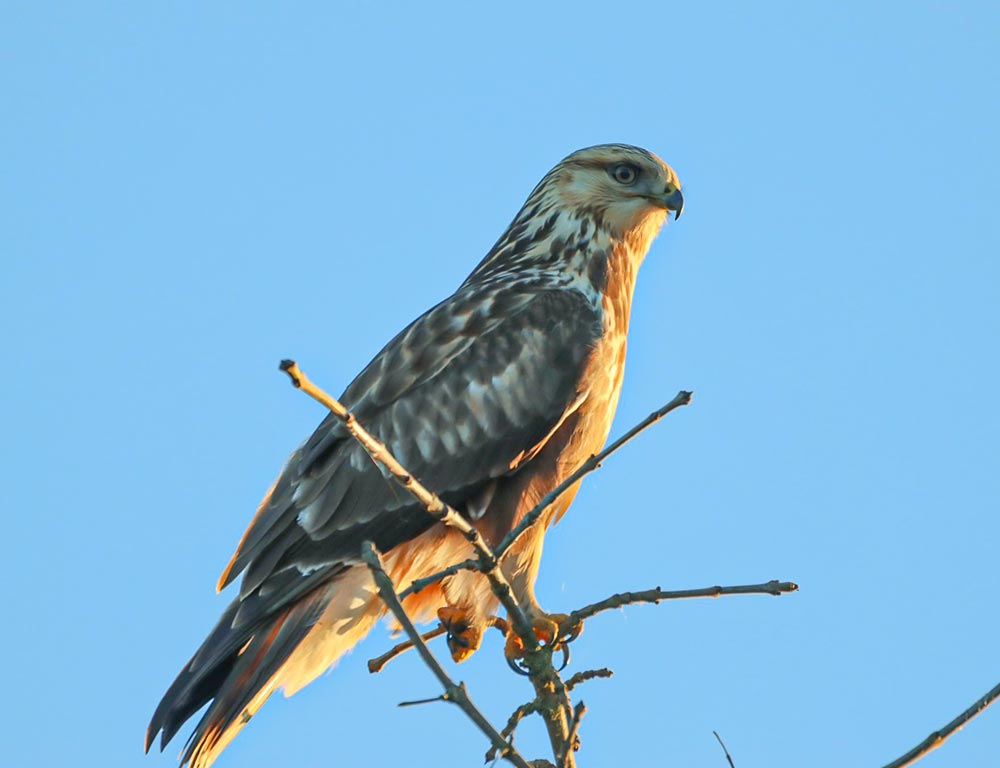
- Scientific name: Buteo lagopus
- Category: Buteo (broad-winged hawk)
- Population: Variable
- Life span: 10 to 15 years
- Size: 18 to 24 inches
- Weight: 2 to 4 pounds
- Food: Small mammals, birds
- Wingspan: 52 to 54 inches
- Status: Seasonal
Rough-legged Hawks, belonging to the broad-winged hawk category, are known for their feathered legs, an adaptation for cold climates.
Their population varies, and they are often seasonal visitors. With a life span of 10 to 15 years, they have a size ranging from 18 to 24 inches and weigh between 2 to 4 pounds.
These hawks predominantly feed on small mammals and birds. The Rough-legged Hawk’s wingspan is impressive, ranging from 52 to 54 inches, aiding them in their migratory journeys.
9. Swainson’s Hawk
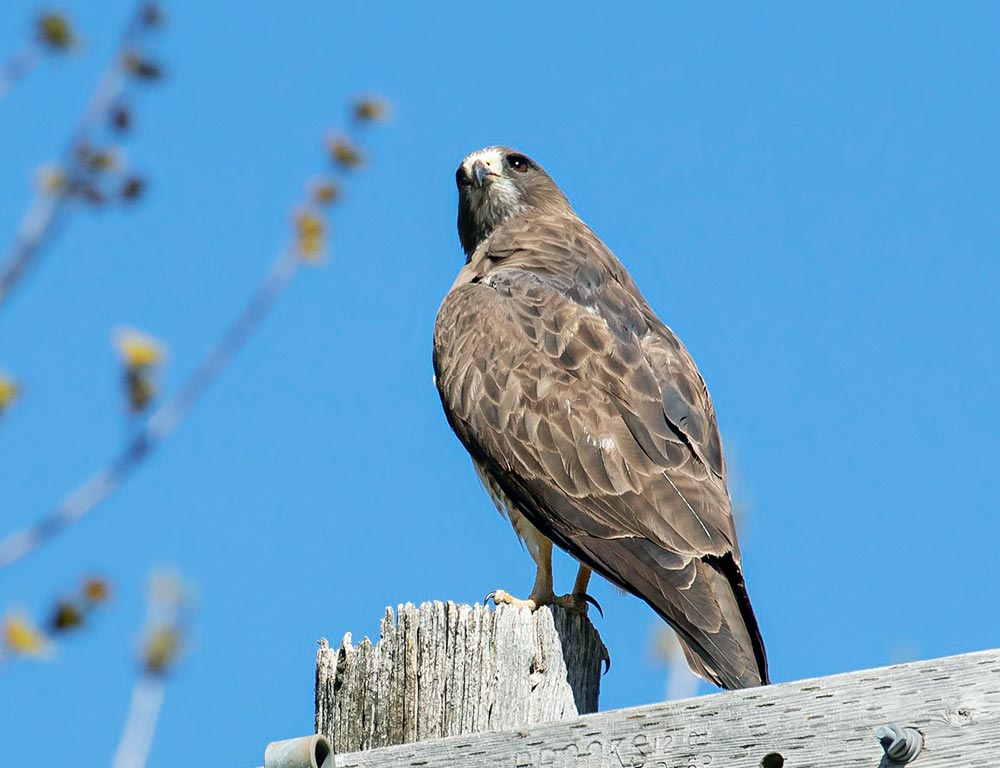
- Scientific name: Buteo swainsoni
- Category: Buteo (broad-winged hawk)
- Population: Stable
- Life span: 7 to 10 years
- Size: 18 to 22 inches
- Weight: 2 to 3 pounds
- Food: Insects, small mammals, reptiles
- Wingspan: 45 to 55 inches
- Status: Common
Swainson’s Hawks, part of the broad-winged hawk category, are known for their distinct plumage and migratory behavior. With a stable population, these hawks have a life span of 7 to 10 years.
They have a size ranging from 18 to 22 inches and weigh between 2 to 3 pounds. Swainson’s Hawks have a diverse diet, including insects, small mammals, and reptiles.
Their wingspan ranges from 45 to 55 inches, aiding in their long-distance flights during migration. Common in Tennessee, they are often spotted during their seasonal movements.
Best Places to Spot Hawks of Tennessee?
Embark on a thrilling avian adventure as we unveil the best places to spot the magnificent hawks of Tennessee.
From scenic vistas to hidden nature reserves, these locations offer prime opportunities to witness these majestic birds in their natural habitats.
Immerse yourself in the beauty of Tennessee’s landscapes and discover the awe-inspiring world of hawks.
Great Smoky Mountains National Park
Nestled in the Appalachian Mountains, this park provides a diverse habitat, making it a haven for various hawk species. Explore the Clingmans Dome area for an elevated perspective.
Reelfoot Lake State Park
This wildlife-rich area attracts hawks year-round with its cypress trees and marshes. The lake’s surroundings offer ample opportunities for observation and photography.
Chickamauga and Chattanooga National Military Park
Hawks often frequent the skies above this historic park. The expansive fields and woodlands are ideal for observing their soaring flights.
Radnor Lake State Park
A serene setting near Nashville, Radnor Lake is a hotspot for birdwatching. Trails around the lake and through surrounding forests offer glimpses of hawks in flight.
Natchez Trace Parkway
Follow the scenic Natchez Trace Parkway, where hawks can be spotted along the route. The open landscapes and woodlands create a perfect environment for these birds.
Big South Fork National River and Recreation Area
The rugged terrain of Big South Fork provides an excellent backdrop for hawk-watching. Explore the park’s canyons and cliffs for a chance to witness these birds in action.
Whether you’re an avid birdwatcher or a nature enthusiast, these carefully chosen locations promise unforgettable encounters with the hawks of Tennessee.
Steps to Increase the Number of Hawks in Tennessee
Enhancing the population of hawks in Tennessee involves a combination of habitat conservation, public awareness, and wildlife management. Here are steps to increase the number of hawks in the region:
Habitat Preservation and Restoration
Protect and restore natural habitats essential for hawks. Preserve wooded areas, open spaces, and nesting sites, ensuring a diverse environment with ample prey.
Implement Sustainable Land Use Practices
Encourage and enforce sustainable land management practices to minimize habitat fragmentation and destruction. This includes responsible logging, agriculture, and urban development.
Raptor-friendly Power Line Practices
Collaborate with utility companies to implement raptor-friendly power line practices, such as installing bird-safe perch deterrents to reduce the risk of electrocution and collisions.
Education and Public Awareness
Increase public awareness about the importance of hawks in the ecosystem. Educate communities on the role of hawks in controlling pest populations and maintaining a balanced ecosystem.
Controlled Hunting Practices
Implement controlled hunting practices to manage prey species populations. This ensures enough food is available for hawks while maintaining a healthy balance in the ecosystem.
Monitoring and Research Programs
Establish monitoring programs to track hawk populations, nesting success, and migration patterns. Conduct research to understand their behavior better, identify threats, and develop targeted conservation strategies.
Collaboration with Wildlife Agencies
Collaborate with state and federal wildlife agencies to develop and implement hawk conservation programs. This includes habitat restoration initiatives, captive breeding and release programs, and protection of critical nesting sites.
Promotion of Responsible Pesticide Use
Advocate for the responsible use of pesticides to prevent contamination of the hawks’ food sources. Encourage farmers and landowners to adopt integrated pest management practices that minimize harm to non-target species.
Wrapping Up
In fostering a thriving environment for hawks in Tennessee, a collective effort toward habitat preservation, sustainable practices, and community engagement is essential.
As guardians of biodiversity, these magnificent birds play a pivotal role in maintaining ecological balance.
By implementing conservation strategies, supporting research initiatives, and fostering public awareness, we can ensure the continued presence and flourishing of hawks in the diverse landscapes of Tennessee.
Through these concerted efforts, we contribute to the well-being of these birds and the overall health and resilience of our shared natural heritage. Thank you very much.